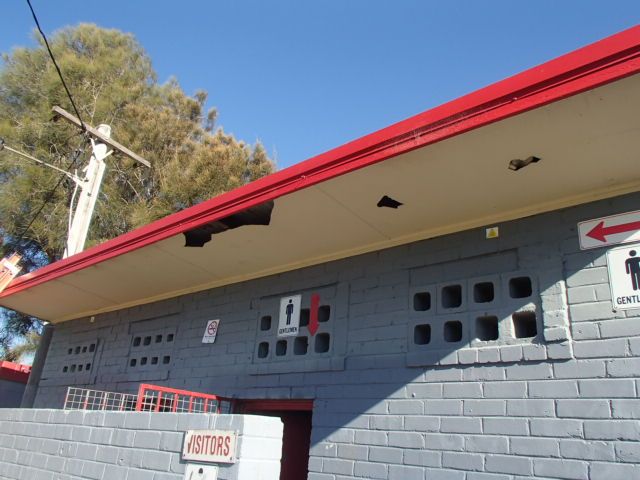In most instances asbestos containing materials have been well maintained and need to just be labelled as asbestos containing.
When remediation works are required you have a few options. So let’s have a look at these and determine when these methods can be used appropriately.
When a material is unlikely to sustain further damage, is not too deteriorated, removal of the asbestos material is not feasible and when there is a firm bond to the substrate, a remediation option is usually to encapsulate or seal the material. This option is not only quick but also economical when it comes to minor repair work. In most cases this option is adequate to control the release of asbestos fibres.
Usually when the asbestos material is extremely difficult to remove or inaccessible an option is to enclose the material or area that the material can be found. This is advantageous since it minimises any disturbance to the occupants and is a viable option of control for those rare cases. An exception to this is when there may be a risk that the enclosure itself may be prone to damage or if the material cannot be fully enclosed.
However, the drawback for these methods is that there needs to be a continuing asbestos management program and essentially the asbestos hazard remains on site which may require asbestos air monitoring to provide evidence that the controls are effective. And to add to that the eventual removal of the material may end up becoming more difficult and costly.
Finally the most effective method, when done right, is the complete removal of the asbestos containing material. This not only completely removes the hazard but it also negates the need for any further management or continuing assessment. The drawbacks, apart from the increased cost, is that if the removal methods are not correctly implemented that there can be an immediate risk of asbestos exposure to the workers and that it could possibly contaminate the whole building.
Contact the team at Safe Environments today if you need an Asbestos Management Plan or a determination of the appropriate control methods for Asbestos.
Author: Dennis Clemence

Email: info@SafeEnvironments.com.au
Dennis is a Property Risk Assessor at Safe Environments conducting inspections and assessments of asbestos and hazardous building materials. Dennis completed a Bachelor of Science Degree in Forensic Science at the University of Western Sydney. An action and initiative driven person Dennis has strong communication skills and has provided his time volunteering at a local Community Legal Centre to assist Solicitors in providing legal advice to clients. He has conducted a toxicological audits based on the GHS and Safe Work Australia advising on the general storage, handling and disposal of the various chemicals.


